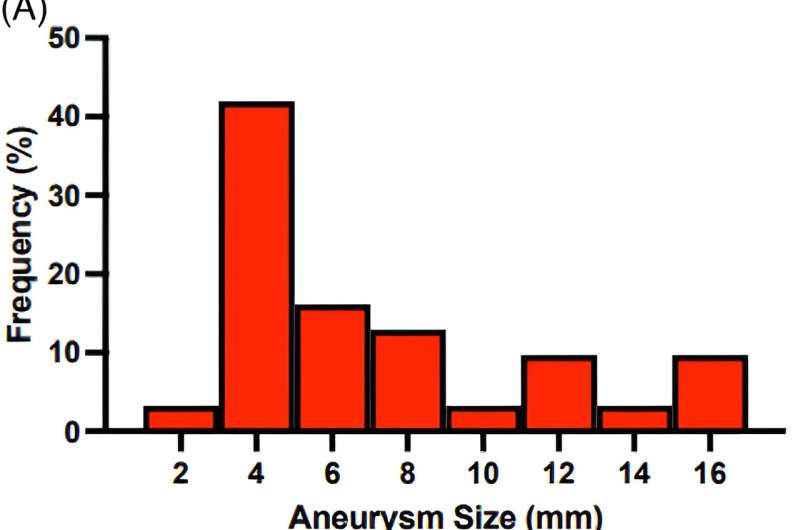This article has been reviewed according to Science X's editorial process and policies. Editors have highlighted the following attributes while ensuring the content's credibility:
fact-checked
trusted source
proofread
Unruptured brain aneurysms may be missed in routine clinical care, but AI-powered algorithm can help

Unruptured cerebral aneurysms of sizes and locations that require attention may be frequently missed in routine clinical care, but a machine learning algorithm could minimize missed care opportunities, according to a new study from UTHealth Houston.
The research, published today in Stroke: Vascular and Interventional Neurology, was led by senior author Sunil A. Sheth, MD, associate professor in the Department of Neurology with McGovern Medical School at UTHealth Houston, as well as co-first authors Hyun Woo Kim, MD, vascular and interventional neurology fellow at UTHealth Houston, and Anjan Nagesh Ballekere, MS, research coordinator in the neurology department.
Approximately 30,000 people living in the U.S. experience a ruptured aneurysm annually. The estimated prevalence of unruptured cerebral aneurysms is 3.2%. Currently, many of these aneurysms are found incidentally on brain imaging, performed often for unrelated reasons, and getting an accurate count remains challenging.
"We have already seen the tremendous benefit that machine learning can bring to patients suffering from acute stroke," said Sheth, who is also director of the vascular neurology program at McGovern Medical School. "In this study, we see a similar possibility for substantially improving the way in which we identify, counsel, and help patients with brain aneurysms."
The team studied a prospectively maintained registry that included eight certified stroke centers. They identified patients who underwent computed tomography (CT) angiography for evaluation of possible stroke from March 14, 2021, to Nov. 31, 2021. A machine learning algorithm called Viz Aneurysm analyzed imaging to identify unruptured brain aneurysms at least 4 millimeters in size.
Of the 1,191 CT angiograms performed during the study period, 50 were flagged by the machine learning algorithm as possibly demonstrating an unruptured cerebral aneurysm. Among those, 36 true aneurysms were identified from the 31 CT angiograms, with four cases of multiple aneurysms.
Twenty-four of the 36 aneurysms (67%) were previously not referred for follow-up, with a median size of 4.4 millimeters. Among them, five aneurysms measured greater than 7 millimeters and had an average risk of rupture of 2.4% over five years. In other words, only 33% of unruptured cerebral aneurysms—many of which require attention and may warrant treatment—were originally referred for follow-up in routine clinical care.
"Before Viz Aneurysm, the referral rate of unruptured cerebral aneurysms were significantly lower than we expected," Kim said. "We believe that machine learning algorithm screening and alerting clinicians to studies that may harbor cerebral aneurysms could improve rates of detection and follow-ups."
Overall, the most common locations of aneurysms included the internal carotid artery (46%).
The researchers said machine learning algorithms have the potential to improve the identification of unruptured cerebral aneurysms by flagging CT angiograms suspected of aneurysm, and coordinating the potential follow-up with referral and communication options for the entire care team in the same application.
"We hope to continue and improve upon this work in order to benefit patients," Ballekere said. "This will help improve quality of care for acute stroke patients when implemented."
More information: Hyun‐Woo Kim et al, Machine Learning–Enabled Detection of Unruptured Cerebral Aneurysms Improves Detection Rates and Clinical Care, Stroke: Vascular and Interventional Neurology (2023). DOI: 10.1161/SVIN.123.000938




















